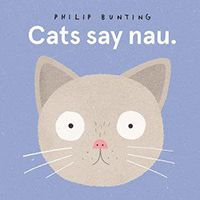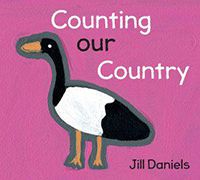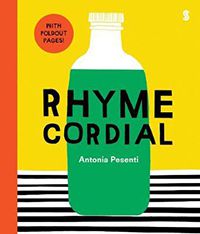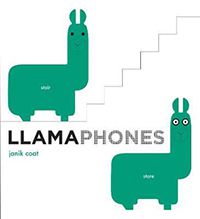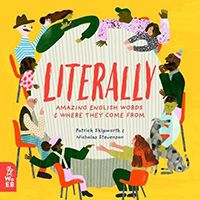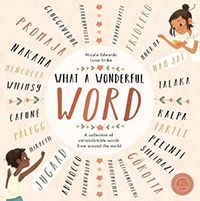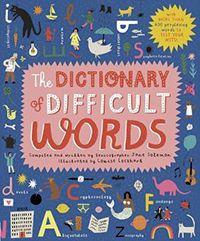Onomatopoeia, puns, homophones, word play, learning a new language - there are so many ways to explore, celebrate and foster a love of language using kids books.
Here are some of our favourite books that feature playful use of language.
Cats Say Nau & Dogs Say Bau by Philip Bunting
When an animal makes its call, we all hear exactly the same noise. But depending on the language you speak, and where you are in the world, the way you translate that noise can be very different. These two cute companion board books explore where cats say ‘nau’, and cows say ‘boe’ and birds say ‘pee pee’. Take a hilarious trip around the world to find out how we translate animal noises in different languages. As author Philip Bunting says: ‘Onomatopoeia is one of the great joys of language. No matter which language you speak – or where you are in the world – translating noises into mimicked words is a gateway to a life-long love of language (and silliness).’ We couldn’t agree more!
For ages 1 and up.
Counting Our Country by Jill Daniels
This bright and beautiful bilingual counting book features animals, numbers and the Ritharrnu and English languages. Counting Our Country was created by Jill Daniels, a Ritharrnu and Madarrpa artist from South East-Arnhem Land in the Northern Territory, and features lovely bold paintings of animals like the long-necked turtle (bakarra) and barramundi (mirritji). Toddlers and preschoolers will love counting the animals from 1 to 10, and learning the Ritharrnu animal names.
For ages 1 and up.
Rhyme Cordial by Antonia Pesenti
This large format lift-the-flap board book is stylishly designed, chunkily sturdy and full of lots of fun and silly word play. When you lift a flap sun hat suddenly becomes sun cat, alarm clock becomes alarm croc, finger nails become finger snails, cheese on toast becomes sneeze on toast, and so on. The illustrations are a dream and this book is guaranteed to make adults and little ones laugh.
For ages 1 and up.
Llamaphones by Janik Coat
Llamaphones features funny and witty examples of homophones - words that sound the same but are spelled differently, and have different meanings. A very jaunty llama takes the reader through words like prints/prince, rose/rows, fairy/ferry and more, demonstrating the two different meanings in a comical fashion. As well as the great graphic illustrations, this book has some really nice touch-and-feel elements such as clock hands, flaps and textures. Be sure to also check out Coat’s other equally fun and wordy book, Rhymoceros.
For ages 4 and up.
Literally by Patrick Skipworth & Nicholas Stevenson
Did you know that English words come from all over the world and that their meanings have changed along their journey? Our word ‘zero’ comes from the Arabic word for empty space. ‘Companion’ is from the Latin for with bread, while ‘caribou’ means ‘snow shoveler’ in Mi'kmaq, an indigenous language of eastern Canada. Here, readers can see how inspiration for individual words come from phrases, actions and sounds, and how meaning and usage morphs over time. This very approachable introduction to etymology shows the fascinating history of twelve English words, and its connections with other languages. Each double page spread features a sumptuous illustration and a pithy explanation.
For ages 6 and up.
What a Wonderful Word by Nicola Edwards & Luisa Uribe
Have you ever wished there was a word for friends who are like family to you, or for the way you hesitate when you’ve forgotten someone’s name? Did you know there was a special word for the distance a reindeer can travel before needing the toilet? Or for when you search for something in the water using only your feet? This hand-picked collection of words from all over the world celebrates the ways one single word can express a lot. Gorgeously illustrated and full of fascinating facts about other languages and cultures, this is the perfect book for young readers who love language and are what the Russians might call a Pochemuchka (a ‘curious child’).
For ages 7 and up.
The Dictionary of Difficult Words by Jane Solomon & Louise Lockhart
What is a bumbershoot? Or a moonbow? And what does it mean when someone absquatulates? The Dictionary of Difficult Words has more than 400 words to amaze, confuse and inspire budding wordsmiths. Written with simple, easy-to-understand definitions by lexicographer Jane Solomon, this dictionary celebrates the beauty of the English language. All of the featured words are difficult to spell, hard to say and have obscure meanings - all the better to bamboozle the entire family with. Alphabetically organised and designed in a breezy style with bright illustrations, this work contains hours of entertainment and learning inside.
For ages 7 and up.


